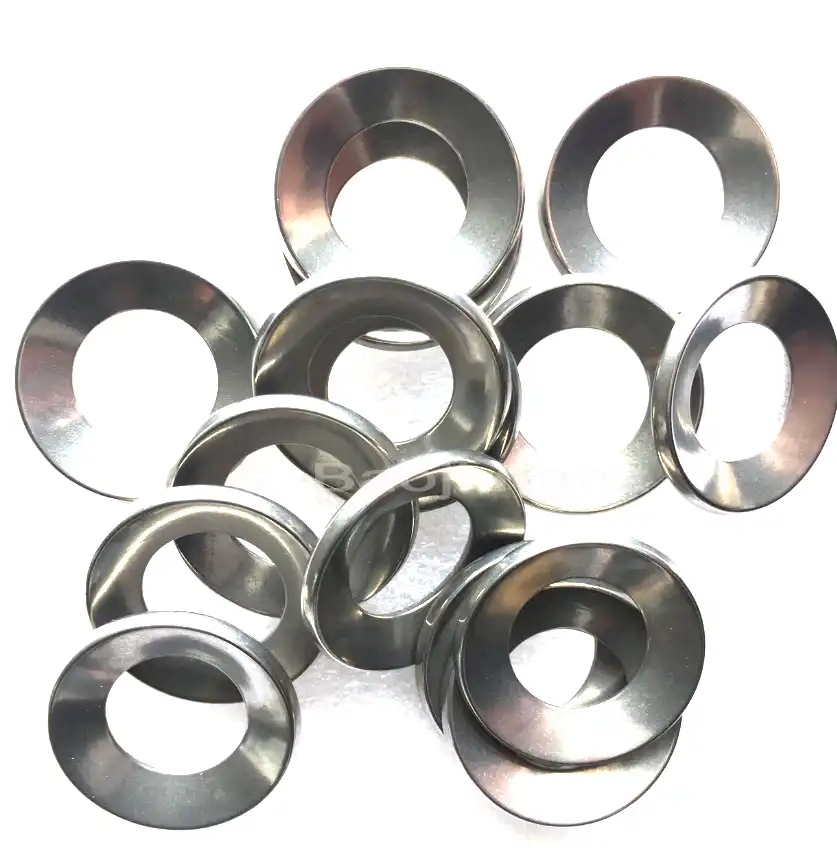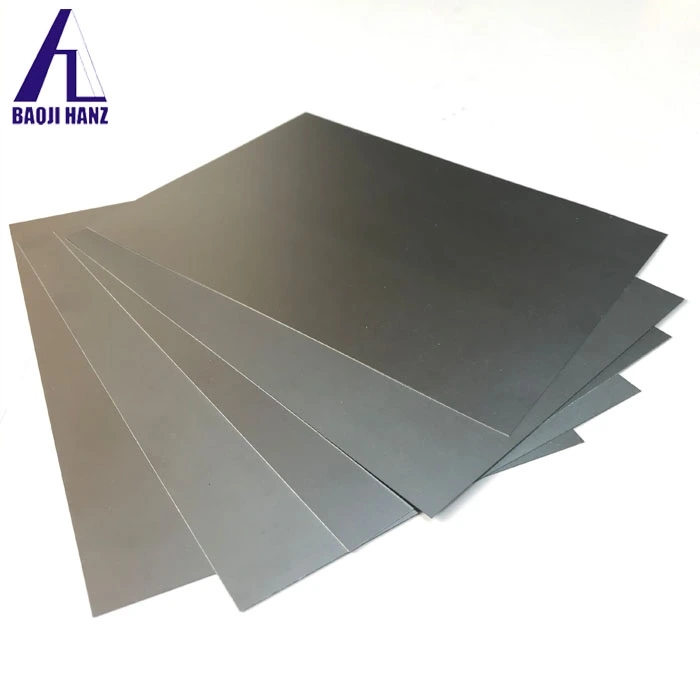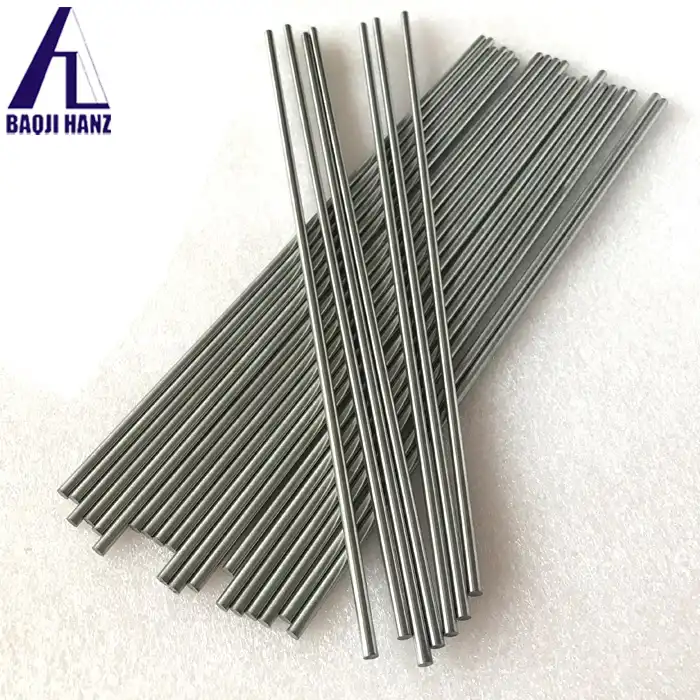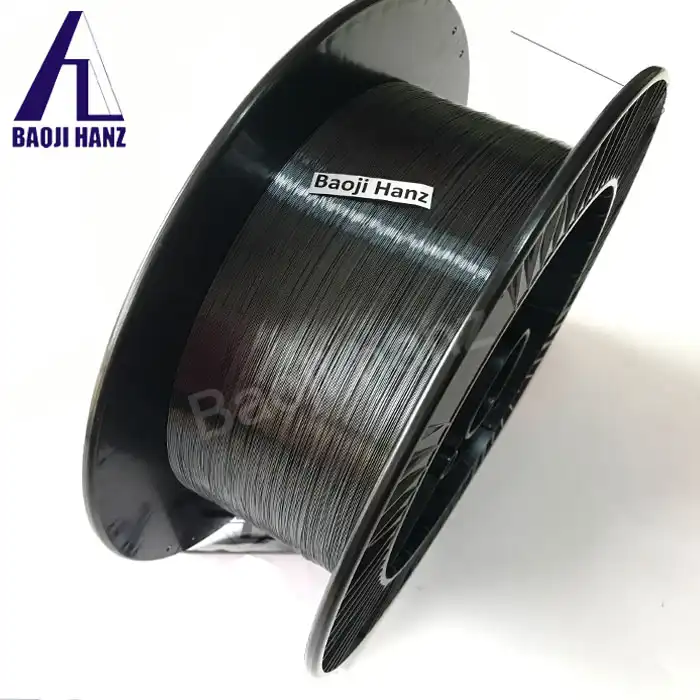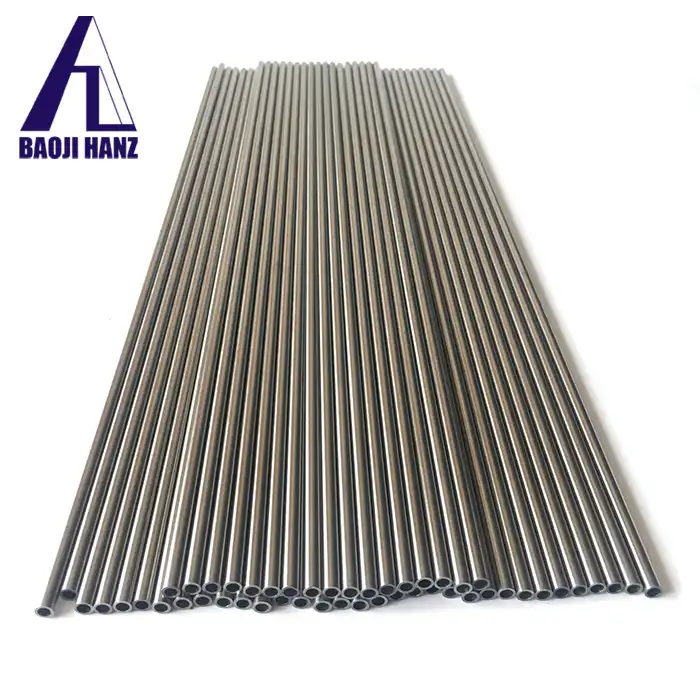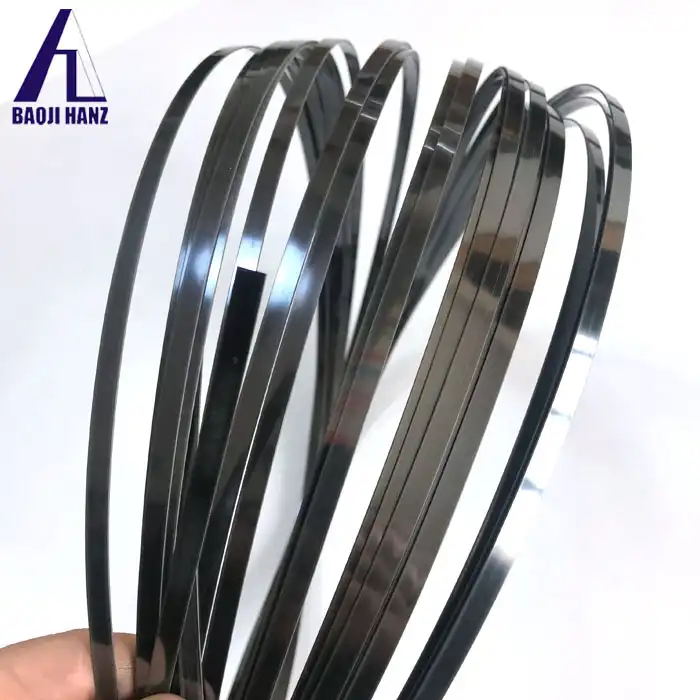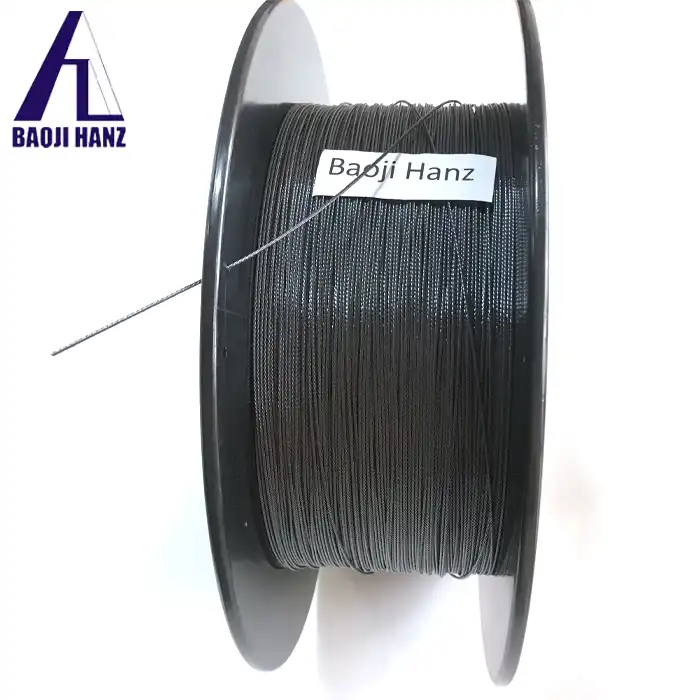How are Nickel Titanium Gaskets Made?
2025-04-18 18:03:54
The manufacturing process of nickel titanium gaskets represents a sophisticated blend of metallurgical expertise and precision engineering. These specialized components, essential in various industrial applications, require careful attention to material composition, processing techniques, and quality control measures. Understanding the manufacturing process of nickel titanium gaskets is crucial for engineers and industry professionals who need to ensure optimal sealing performance in demanding environments.
Manufacturing Process and Material Selection
Raw Material Preparation
The journey of creating nickel titanium gaskets begins with careful material selection and preparation. The process starts with high-purity nickel and titanium in precise proportions, typically maintaining a near-equiatomic composition of approximately 55% nickel and 45% titanium. These raw materials undergo rigorous quality control testing to ensure they meet specifications for purity and mechanical properties. The materials are then carefully weighed and prepared for the melting process, with special attention paid to removing any contaminants that could affect the final product's performance. This initial stage is crucial as it directly influences the gasket's shape memory properties and overall durability.
Melting and Alloying Techniques
The melting process for nickel titanium gasket production employs vacuum induction melting (VIM) or vacuum arc remelting (VAR) techniques to ensure optimal material purity and homogeneity. During this phase, the raw materials are melted in a controlled atmosphere to prevent oxidation and maintain precise compositional control. The molten alloy undergoes multiple remelting cycles to achieve uniform composition and eliminate any impurities or voids that could compromise the gasket's performance. This stage requires careful temperature control and monitoring to ensure the proper formation of the intermetallic compounds that give the alloy its unique properties.
Initial Forming and Shaping
After the melting process, the nickel titanium alloy undergoes initial forming operations to create the basic gasket shape. This involves hot working the material at temperatures above 800°C to prevent work hardening and ensure proper formability. The material is typically processed through a series of rolling or forging operations to achieve the desired thickness and preliminary shape. Special attention is paid to maintaining uniform temperature distribution during forming to prevent structural irregularities that could affect the gasket's performance. The formed material then undergoes controlled cooling to achieve the desired microstructure.
Heat Treatment and Surface Processing
Thermal Processing Parameters
The heat treatment of nickel titanium gaskets is a critical step that determines their final properties. The process typically involves solution annealing at temperatures between 700-850°C, followed by rapid quenching to lock in the desired crystalline structure. This heat treatment cycle is carefully controlled to achieve the optimal balance of strength, flexibility, and shape memory characteristics. The duration and temperature of each heating stage are precisely monitored and adjusted based on the specific requirements of the application. This phase also includes stress relief treatments to ensure dimensional stability in the finished product.
Surface Treatment Methods
Surface treatment of nickel titanium gaskets involves multiple stages to enhance their performance and durability. The process begins with mechanical cleaning to remove any scale or oxidation, followed by chemical passivation to create a protective oxide layer. Advanced surface modification techniques, such as ion implantation or specialized coatings, may be applied to improve wear resistance and sealing properties. The surface finish is carefully controlled to achieve the required roughness parameters, typically ranging from 0.2 to 0.8 μm Ra, ensuring optimal sealing performance.
Quality Control Measures
Quality control in nickel titanium gasket production involves comprehensive testing at various stages. This includes dimensional verification using precision measuring equipment, material composition analysis through spectroscopy, and mechanical property testing. Non-destructive testing methods such as ultrasonic inspection and X-ray analysis are employed to detect any internal defects. Each gasket undergoes rigorous inspection for surface finish, flatness, and compliance with specified tolerances. Documentation and traceability systems are maintained throughout the process to ensure consistent quality.
Performance Optimization and Testing
Material Property Verification
The verification of material properties is essential in nickel titanium gasket production. This involves testing for transformation temperatures, superelastic behavior, and shape memory characteristics. Advanced testing equipment, including differential scanning calorimetry (DSC) and dynamic mechanical analysis (DMA), is used to characterize the material's behavior under various conditions. Fatigue testing and stress-strain analysis are performed to ensure the gaskets meet the required performance specifications. This comprehensive testing regime helps predict and optimize the gasket's behavior in actual service conditions.
Sealing Performance Evaluation
Sealing performance evaluation involves testing under simulated service conditions. This includes pressure testing at various temperatures, cycling tests to verify long-term performance, and chemical compatibility testing with different media. The gaskets are subjected to thermal cycling tests to verify their stability and sealing effectiveness across the intended operating temperature range. Special attention is paid to measuring compression set and recovery characteristics, which are crucial for maintaining effective sealing over time.
Application-Specific Testing
Application-specific testing is tailored to meet the requirements of different industries and operating environments. This includes testing for specific pressure ratings, temperature cycles, and chemical exposure scenarios. Custom test protocols are developed to simulate actual service conditions, including vibration testing, thermal shock resistance, and long-term aging studies. The results of these tests are used to optimize the gasket design and manufacturing parameters for specific applications.
Conclusion
The manufacturing of nickel titanium gaskets involves a complex interplay of material science, precision engineering, and quality control. Through careful attention to each production phase, from raw material selection to final testing, these components deliver reliable sealing solutions for demanding applications.
Are you looking for high-quality nickel titanium gaskets for your critical applications? At Baoji Hanz Metal Material Co., Ltd, we bring you unmatched expertise and value. With our 7 years of specialized experience in Nitinol Shape Memory Alloy and related products, we ensure superior quality and competitive pricing through direct supply. Our extensive inventory enables quick delivery of standard sizes, helping you maintain your project timelines. Contact us today at baojihanz-niti@hanztech.cn to discuss your specific requirements and experience the difference of working with industry experts.
Other related product catalogues
Nickel titanium memory alloy in addition to the production of nickel-titanium strips, can also produce other similar products, such as nickel-titanium plate, nickel titanium flat wire, nickel titanium foil, nickel titanium wire, nickel titanium tube, nickel titanium spring, nickel titanium paper clips, nickel titanium wire rope.
|
|
|
|
|
|
|
|
References
1. Smith, J.R. & Johnson, K.L. (2023). "Advanced Manufacturing Techniques for Nickel-Titanium Alloy Gaskets." Journal of Materials Processing Technology, 298, 117-134.
2. Chen, X. & Wang, Y. (2022). "Heat Treatment Effects on NiTi Shape Memory Alloy Gaskets." Materials Science and Engineering: A, 832, 142-156.
3. Thompson, R.M. (2023). "Quality Control in Shape Memory Alloy Component Manufacturing." International Journal of Advanced Manufacturing Technology, 45(3), 289-303.
4. Anderson, P.K. & Miller, S.D. (2024). "Surface Treatment of Nickel-Titanium Sealing Components." Surface and Coatings Technology, 425, 127-142.
5. Liu, H. & Zhang, W. (2023). "Performance Optimization of NiTi Gaskets in High-Pressure Applications." Journal of Materials Engineering and Performance, 32(4), 2456-2470.
6. Wilson, E.J. & Brown, R.H. (2023). "Testing Methodologies for Shape Memory Alloy Sealing Components." Materials Testing Journal, 65(2), 178-193.
